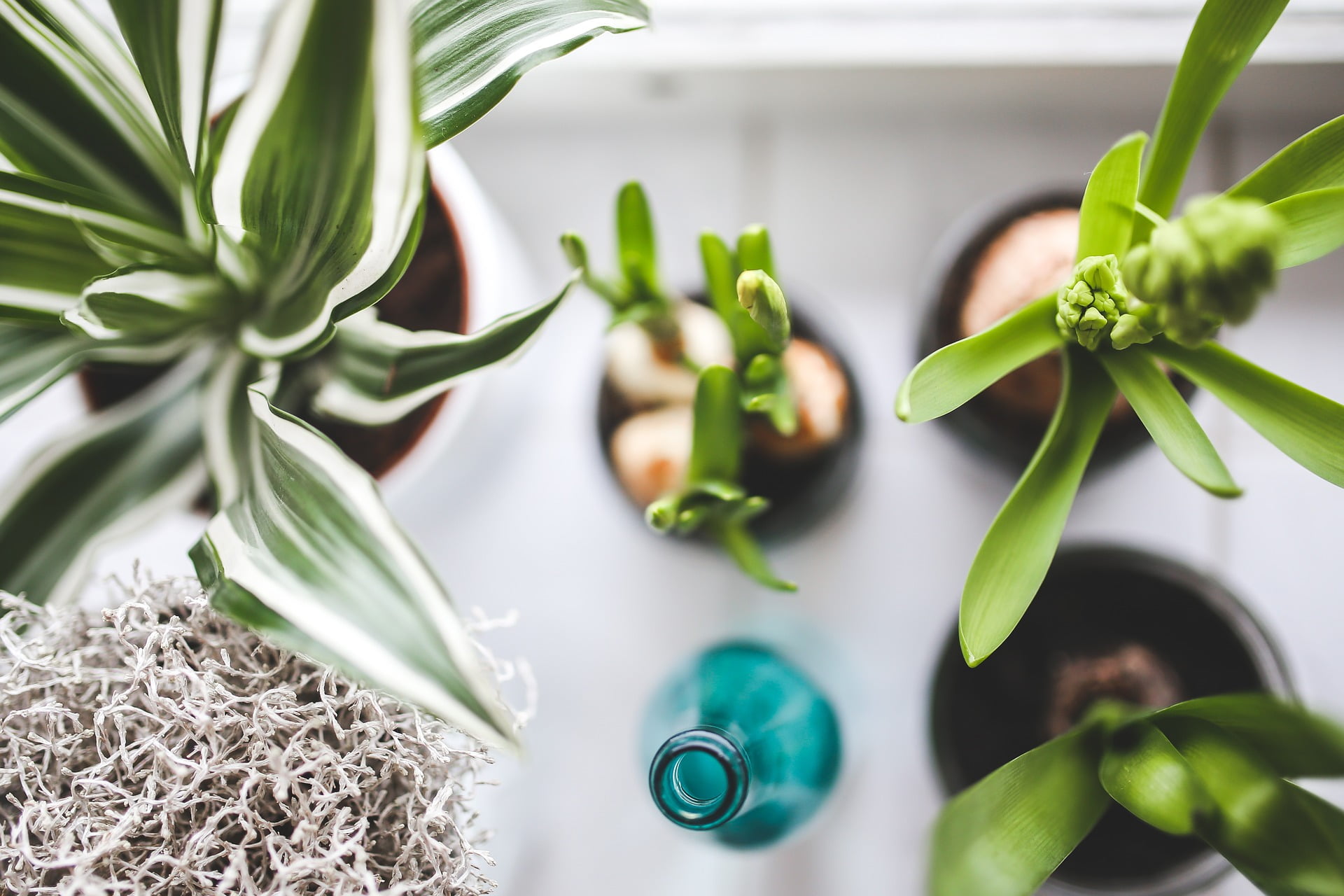Are you unsure about how often to water your camellias? Proper watering is crucial to the health of your camellia plants, as both under and overwatering can lead to serious damage. In this article, we will guide you through the essential steps to determine the watering needs of your camellias and keep them thriving.
Understanding the watering needs of your camellias is the first step. Factors such as climate, humidity, and soil type can affect how often you should water your plants. Whether your camellias are newly planted or well-established also plays a role in determining the right watering frequency.
We will also discuss proper watering techniques to ensure that your camellias receive the right amount of water. Furthermore, we will highlight the signs of both underwatering and overwatering, allowing you to adjust your watering schedule accordingly.
By the end of this article, you will feel confident in your ability to water your camellias effectively, promoting their growth and overall safety.
So, let’s dive in and learn how to keep your camellias happy and healthy!
Quick Summary
- Factors affecting watering needs: climate, humidity, soil type
- Newly planted camellias require more frequent watering
- Adjust watering frequency based on weather and soil moisture
- Potted camellias have different watering needs than those in ground
Understand the Watering Needs of Camellias
You’ll want to understand how often to water your camellias to keep them healthy and thriving. Watering methods and the importance of soil moisture are key factors to consider when it comes to watering your camellias.
When it comes to watering camellias, it’s important to choose the right method. One effective method is deep watering. This involves watering your camellias slowly and deeply, allowing the water to penetrate the root zone. Deep watering encourages the roots to grow deeper and helps the plants become more resilient to drought conditions.
Another method is using a drip irrigation system, which provides a consistent and slow supply of water directly to the plants’ root zone.
The soil moisture level is crucial for the health of your camellias. It’s important to keep the soil consistently moist, but not overly wet. Camellias prefer a slightly acidic soil with good drainage. Before watering, check the soil moisture by inserting your finger into the soil up to the first knuckle. If the soil feels dry at this depth, it’s time to water. However, if the soil feels wet, it’s best to hold off on watering until it dries out a bit.
By understanding the proper watering methods and the importance of soil moisture, you can ensure that your camellias stay healthy and thrive. Remember to monitor the soil moisture regularly and adjust your watering schedule accordingly.
Consider the Environmental Factors
Make sure to take into account the environmental factors when determining how frequently to give your camellias a drink. It’s important to establish a proper watering schedule that considers the humidity levels in your area. The climate plays a significant role in the water requirements of your camellias, as it affects the rate of evaporation and the amount of moisture available in the soil.
In regions with high humidity levels, such as coastal areas, camellias may require less frequent watering. The air is naturally moist, which means that the soil retains moisture for a longer period of time. In these cases, it’s advisable to water your camellias every 7-10 days, allowing the soil to dry out slightly between waterings.
On the other hand, in areas with low humidity levels, such as arid climates, camellias will need more frequent watering. The dry air can cause the soil to lose moisture quickly, so it’s important to monitor the moisture levels regularly. In such cases, you may need to water your camellias every 3-4 days to prevent the soil from drying out completely.
Remember, it’s crucial to strike a balance when it comes to watering your camellias. Overwatering can lead to root rot and other fungal diseases, while underwatering can result in wilted leaves and stunted growth. By considering the environmental factors and adjusting your watering schedule accordingly, you can ensure the health and vitality of your camellias.
Watering Frequency for Newly Planted Camellias
Taking into account the specific needs of newly planted camellias, it’s essential to establish a proper watering frequency to ensure their successful establishment and growth. To help you create an effective watering schedule for your camellias, here are some important guidelines to follow:
-
Watering frequency: For the first few weeks after planting, it’s crucial to keep the soil consistently moist. This means watering your camellias two to three times a week, depending on the weather conditions. As the plant establishes its roots, you can gradually reduce the frequency to once a week.
-
Watering depth: It’s important to water deeply to encourage deep root growth. Aim to provide enough water to moisten the top 6-8 inches of soil. This will allow the roots to access water from deeper in the ground, making your camellias more resilient during dry periods.
-
Watering technique: Avoid overhead watering, as it can lead to fungal diseases. Instead, use a soaker hose or drip irrigation system to water directly at the base of the plant. This ensures that the water reaches the roots without wetting the foliage.
By following these watering guidelines, you can establish a proper watering schedule for your newly planted camellias, promoting their healthy growth and ensuring their long-term survival.
Watering Frequency for Established Camellias
Maintaining the health and vibrancy of your established camellias relies heavily on finding the right balance in their watering routine. To ensure their well-being, it’s important to follow a proper watering schedule and guidelines.
When it comes to watering established camellias, it’s crucial to strike a balance. Overwatering can lead to root rot and other diseases, while underwatering can cause stress and wilting. The key is to provide enough moisture without drowning the plants.
During the growing season, camellias should generally be watered once or twice a week. However, it’s important to adjust the frequency based on weather conditions and soil moisture. If there’s been rainfall, you may need to water less frequently. Conversely, during hot and dry periods, you may need to increase watering.
When watering, make sure to thoroughly soak the soil around the camellias, ensuring that water reaches the roots. Avoid watering the leaves as this can promote fungal diseases. It’s also advisable to water in the morning, allowing the foliage to dry during the day and reducing the risk of disease.
By following a proper watering schedule and guidelines, you can keep your established camellias healthy and thriving. Remember, finding the right balance is key to their well-being.
Proper Watering Techniques
Achieving optimal hydration for your established camellias is essential for their overall health and vibrant appearance. To ensure your camellias receive the right amount of water, it’s important to establish a watering schedule and use proper watering methods.
Here are some tips to help you water your camellias effectively:
-
Watering schedule: During the growing season, water your camellias deeply once a week. Adjust the frequency based on weather conditions, increasing during hot and dry periods. Reduce watering during cooler months to prevent overwatering and root rot.
-
Watering methods: Use a soaker hose or drip irrigation system to provide a slow and steady water supply. Water at the base of the plant to minimize water waste and prevent foliage diseases. Water early in the morning to allow foliage to dry before evening, reducing the risk of fungal infections.
By following these proper watering techniques, you can ensure your camellias receive adequate hydration without over or underwatering them. Remember, a consistent watering schedule and using appropriate watering methods will promote the health and longevity of your camellias, keeping them safe from water-related issues.
Signs of Underwatering and Overwatering
Make sure you pay close attention to your plants, as they’ll show clear signs if they’re not receiving the proper amount of hydration. Underwatering can have detrimental effects on camellias, causing stress and stunting their growth. Signs of underwatering include wilted leaves, dry soil, and a lack of new growth.
To prevent underwatering, make sure to water your camellias deeply and regularly, especially during dry periods. Check the moisture level of the soil by sticking your finger about an inch deep into the soil. If it feels dry, it’s time to water.
On the other hand, overwatering can also harm camellias. Too much water can lead to root rot and fungal diseases. Signs of overwatering include yellowing leaves, wilting even when the soil is wet, and a musty smell coming from the soil.
To prevent overwatering, make sure the soil has good drainage and avoid watering too frequently. Allow the soil to dry out slightly between waterings.
By paying attention to these signs and taking proper care of your camellias, you can ensure they receive the right amount of water and thrive. Remember, it’s better to slightly underwater than overwater your camellias. So, make sure to monitor their hydration needs closely and adjust your watering schedule accordingly.
Adjusting Watering Schedule Based on Season
To ensure your camellias thrive throughout the year, it’s important to adjust your watering schedule based on the changing seasons. This is especially true for potted camellias, as they have different needs compared to those planted in the ground.
One of the crucial factors in camellia health is soil moisture. Too much or too little water can lead to problems, so it’s essential to find the right balance.
During the warmer months, such as spring and summer, potted camellias require more frequent watering. The higher temperatures and increased sunlight cause the soil to dry out faster. To keep your camellias happy and healthy, water them thoroughly whenever the top inch of soil feels dry to the touch. Make sure the water reaches the roots to promote deep and strong growth.
In contrast, during the colder months, such as fall and winter, potted camellias need less frequent watering. The lower temperatures and reduced sunlight slow down their growth and water requirements. Check the soil moisture by inserting your finger about an inch deep into the soil. If it feels slightly damp, then your camellias are adequately hydrated. However, if it feels dry, it’s time to water them.
By adjusting your watering schedule based on the season, you can ensure that your potted camellias receive the right amount of water to thrive. Remember to monitor the soil moisture regularly and make adjustments accordingly. This simple practice will go a long way in keeping your camellias healthy and beautiful year-round.
Additional Tips for Camellia Care
When caring for your camellias, it’s important to remember that they thrive in well-drained soil. This means that you need to be careful not to overwater them, as this can lead to root rot and other issues. To ensure the health of your camellias, here are some additional tips:
-
Provide adequate shade: Camellias prefer partial shade, especially during the hottest parts of the day. This will help prevent their leaves from burning and drying out.
-
Mulch your camellias: Apply a layer of organic mulch around the base of your camellias to help retain moisture and regulate soil temperature. This will also help prevent weed growth and protect the roots from extreme temperatures.
-
Prune your camellias: Regular pruning will help maintain the shape and size of your camellias. It’s best to prune them after they finish flowering, as this will encourage new growth for the following season.
Incorporating these tips into your camellia care routine will ensure that your plants thrive and stay healthy. Remember to refer to additional resources and avoid common mistakes when caring for your camellias. With proper care, your camellias will reward you with beautiful blooms year after year.
Frequently Asked Questions
Can camellias tolerate drought conditions?
Camellias can tolerate some drought conditions, but it is important to meet their water requirements to prevent drought stress. To ensure their safety, provide regular watering and monitor soil moisture levels.
How does the type of soil affect the watering needs of camellias?
To ensure the health of your camellias, it’s important to consider the type of soil they need. Opt for well-draining soil, such as sandy loam, and improve drainage by adding organic matter like compost.
Can overwatering cause root rot in camellias?
Overwatering can cause root rot in camellias, which can affect their blooms. To avoid this, consider alternative watering methods such as using a drip irrigation system or watering deeply but infrequently.
What are some common signs of overwatering in camellias?
Some common signs of overwatering in camellias include yellowing leaves, wilting, and root rot. To prevent overwatering, ensure proper drainage, water only when the top inch of soil is dry, and avoid leaving standing water.
Should camellias be watered from above or below?
To ensure the safety of your camellias, it is best to water them from below rather than above. This technique prevents water from sitting on the leaves and causing diseases.
Conclusion
In conclusion, taking care of camellias requires understanding their watering needs and considering environmental factors.
For newly planted camellias, water them more frequently to help them establish their roots. Once they’re established, water them less often, but deeply.
It’s important to use proper watering techniques and adjust the watering schedule based on the season.
Be mindful of signs of underwatering and overwatering.
By following these tips, you can ensure the health and beauty of your camellias. Happy gardening!








